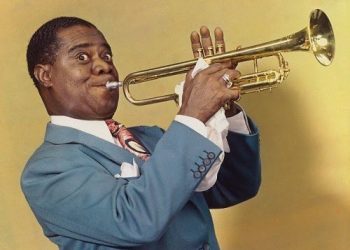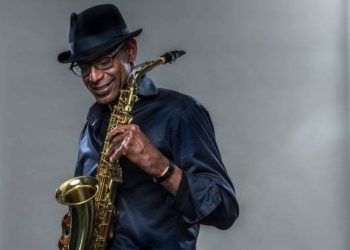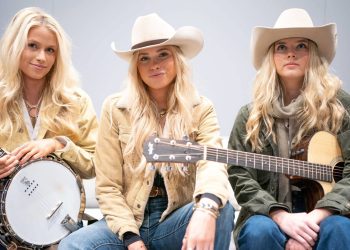Folk bands encompass a diverse array of musical groups that draw inspiration from traditional folk music while incorporating elements of various genres such as rock, country, blues, and world music. These bands often feature acoustic instrumentation, rich vocal harmonies, and storytelling lyrics that celebrate heritage, culture, and the human experience.
One notable example is Fleet Foxes, formed in Seattle in 2006. Known for their lush harmonies and evocative lyrics, Fleet Foxes blend elements of folk, indie rock, and baroque pop to create a sound that is both timeless and contemporary. Their self-titled debut album, released in 2008, received critical acclaim and established them as leaders in the modern folk revival.
Another influential folk band is Mumford & Sons, formed in London in 2007. Combining folk instrumentation such as banjo, acoustic guitar, and upright bass with anthemic choruses and driving rhythms, Mumford & Sons have achieved widespread popularity with hits like “Little Lion Man” and “The Cave.” Their music often explores themes of love, loss, and redemption, resonating with audiences around the world.
The Decemberists, formed in Portland, Oregon in 2000, are known for their eclectic blend of folk, rock, and indie pop, as well as their intricate storytelling lyrics and literary references. With albums like “The Crane Wife” and “The Hazards of Love,” The Decemberists have earned critical acclaim for their ambitious songwriting and adventurous musical arrangements.
Other notable folk bands include The Avett Brothers, The Lumineers, and Of Monsters and Men, each bringing their own unique blend of folk traditions and modern sensibilities to the forefront of the music scene. With their heartfelt lyrics, infectious melodies, and spirited performances, folk bands continue to captivate audiences and inspire listeners around the world.
1. The Kingston Trio
The Kingston Trio, formed in 1957 in Palo Alto, California, is one of the most iconic and influential folk groups in American music history. Comprising Dave Guard, Bob Shane, and Nick Reynolds (replaced by John Stewart in later years), The Kingston Trio played a pivotal role in popularizing folk music during the late 1950s and early 1960s.
At the heart of The Kingston Trio’s music lies their signature three-part vocal harmonies, accompanied by acoustic guitar, banjo, and upright bass. Their repertoire featured a mix of traditional folk songs, sea shanties, and original compositions, performed with an infectious energy and enthusiasm that captured the spirit of the folk revival movement.
The Kingston Trio’s breakthrough came with their debut album, “The Kingston Trio,” released in 1958, which spawned hits like “Tom Dooley” and “Scotch and Soda.” These songs propelled the group to national fame, earning them widespread acclaim and commercial success.
Subsequent albums, including “At Large” and “Here We Go Again,” further solidified The Kingston Trio’s status as folk music icons. Their music appealed to a wide audience, bridging the gap between traditional folk enthusiasts and mainstream listeners, and inspiring countless musicians and bands to explore folk music traditions.
Beyond their musical achievements, The Kingston Trio’s impact on popular culture and the music industry is immeasurable. They helped pave the way for the folk revival of the 1960s, influencing artists like Bob Dylan, Peter, Paul and Mary, and The Byrds, among others.
Though The Kingston Trio underwent numerous lineup changes and eventually disbanded in the late 1960s, their legacy as one of the most beloved and influential folk groups of all time remains intact. Their timeless music continues to be celebrated by fans old and new, ensuring that The Kingston Trio’s place in the annals of American music history will endure for generations to come.
2. Peter, Paul and Mary
Peter, Paul and Mary, formed in New York City in 1961, are celebrated as one of the most influential and iconic folk groups of the 1960s. Comprising Peter Yarrow, Paul Stookey, and Mary Travers, the trio captivated audiences with their rich vocal harmonies, socially conscious lyrics, and dedication to political activism.
At the heart of Peter, Paul and Mary’s music lies their exquisite vocal blend, characterized by Peter’s tenor, Paul’s baritone, and Mary’s soprano. Their repertoire featured a mix of traditional folk songs, contemporary covers, and original compositions, all delivered with a heartfelt sincerity and emotional depth that resonated with listeners around the world.
Peter, Paul and Mary’s breakthrough came with their self-titled debut album, released in 1962, which included hits like “Lemon Tree” and “500 Miles.” Their rendition of “Blowin’ in the Wind” by Bob Dylan became an anthem for the civil rights movement and earned them widespread acclaim and commercial success.
Subsequent albums, including “In the Wind,” “Moving,” and “Album 1700,” further solidified Peter, Paul and Mary’s status as folk music icons. Their music transcended boundaries, appealing to audiences of all ages and backgrounds, and their commitment to social justice issues endeared them to a generation of fans.
Beyond their musical achievements, Peter, Paul and Mary were vocal advocates for peace, civil rights, and environmental conservation. They marched alongside Martin Luther King Jr., performed at the March on Washington, and used their platform to promote positive social change.
Though Mary Travers passed away in 2009, Peter Yarrow and Paul Stookey continue to perform and carry on the legacy of Peter, Paul and Mary. Their timeless music continues to inspire and uplift audiences around the world, ensuring that Peter, Paul and Mary’s place in the annals of folk music history will endure for generations to come.
3. The Weavers
The Weavers were an American folk music quartet formed in 1948 in New York City. The original members were Ronnie Gilbert, Lee Hays, Fred Hellerman, and Pete Seeger. The group played a pivotal role in the folk music revival of the late 1940s and 1950s, popularizing traditional folk songs and introducing new ones to a wider audience.
The Weavers’ music was characterized by their tight vocal harmonies, simple instrumentation, and socially conscious lyrics. They drew inspiration from various folk traditions, including American folk songs, labor songs, spirituals, and international folk music.
One of The Weavers’ most famous recordings is their version of the Lead Belly song “Goodnight, Irene,” which became a massive hit in 1950, topping the charts for 13 weeks. The success of “Goodnight, Irene” propelled The Weavers to national fame and helped spark the folk music revival of the 1950s.
Throughout the 1950s, The Weavers continued to release hit songs, including “Tzena, Tzena, Tzena,” “On Top of Old Smoky,” and “Kisses Sweeter Than Wine.” They became known for their uplifting and infectious performances, which often featured sing-alongs and audience participation.
However, The Weavers’ popularity was short-lived, as they became targets of the anti-communist hysteria of the McCarthy era. Due to their left-wing political views and past affiliations with progressive causes, The Weavers were blacklisted from radio and television and faced persecution from government authorities.
Despite these challenges, The Weavers continued to perform and record independently, releasing albums on small labels and performing in folk clubs and concert halls. Their influence on the folk music scene remained strong, and they inspired countless musicians and activists with their music and activism.
In the 1960s, The Weavers’ music experienced a resurgence in popularity, as younger generations embraced folk music as a form of protest against social and political injustices. The Weavers continued to perform and record sporadically until their final concert in 1980.
The Weavers’ legacy as pioneers of the folk music revival and champions of social justice continues to resonate today. Their music has left an indelible mark on American culture, and their influence can be heard in the work of countless folk musicians and activists around the world.
4. The Byrds
The Byrds were an American rock band formed in Los Angeles, California, in 1964. They were pioneers of the folk rock genre and played a significant role in the development of psychedelic rock and country rock. The band’s original lineup consisted of Jim McGuinn (later known as Roger McGuinn) on vocals and guitar, Gene Clark on vocals and tambourine, David Crosby on vocals and rhythm guitar, Chris Hillman on bass guitar, and Michael Clarke on drums.
The Byrds gained fame with their groundbreaking cover of Bob Dylan’s “Mr. Tambourine Man,” which became a massive hit in 1965, reaching the top of the charts and establishing the band as leaders of the folk rock movement. Their jangly guitars, tight harmonies, and melodic sensibilities set them apart from other bands of the era and helped define the sound of mid-1960s American rock music.
The Byrds continued to release a string of influential albums throughout the 1960s, including “Turn! Turn! Turn!” (1965), “Fifth Dimension” (1966), and “Younger Than Yesterday” (1967). These albums featured original compositions as well as innovative covers of folk, rock, and country songs, showcasing the band’s versatility and eclectic tastes.
In addition to their music, The Byrds were known for their experimentation with psychedelic drugs and their involvement in the counterculture movement of the 1960s. Their music often reflected themes of social change, spiritual exploration, and personal introspection, resonating with a generation of young people searching for meaning and authenticity in a rapidly changing world.
In the late 1960s and early 1970s, The Byrds continued to evolve their sound, incorporating elements of country music and exploring more ambitious and experimental song structures. Albums like “Sweetheart of the Rodeo” (1968) and “The Notorious Byrd Brothers” (1968) showcased the band’s willingness to push boundaries and defy genre conventions.
Despite lineup changes and internal tensions, The Byrds remained a formidable force in the music world throughout the 1960s and early 1970s. Their influence can be heard in the work of countless bands and musicians, and their legacy as pioneers of folk rock and psychedelic rock continues to be celebrated to this day.
5. Crosby, Stills, Nash & Young
Crosby, Stills, Nash & Young, formed in the late 1960s, is revered as one of the most influential and enduring supergroups in the history of rock and folk music. Comprising David Crosby, Stephen Stills, Graham Nash, and Neil Young, the quartet brought together four incredibly talented singer-songwriters from prominent bands of the era, including The Byrds, Buffalo Springfield, and The Hollies.
At the heart of Crosby, Stills, Nash & Young’s music lies their exquisite vocal harmonies, intricate acoustic guitar work, and socially conscious lyrics. Their songs often explored themes of love, peace, and political activism, reflecting the tumultuous social and political climate of the late 1960s and early 1970s.
The quartet’s self-titled debut album, released in 1969, featured hits like “Suite: Judy Blue Eyes” and “Marrakesh Express,” showcasing their impeccable vocal blend and songwriting prowess. Their follow-up album, “Déjà Vu,” released in 1970, included classics like “Teach Your Children,” “Our House,” and “Woodstock,” solidifying their status as folk-rock icons.
Crosby, Stills, Nash & Young’s electrifying live performances, both as a quartet and as individual members, further cemented their reputation as one of the premier acts of their time. Their legendary appearances at events like Woodstock and Altamont, as well as their politically charged songs like “Ohio” in response to the Kent State shootings, underscored their commitment to social activism and musical excellence.
Though Crosby, Stills, Nash & Young experienced periods of tension and hiatus over the years due to creative differences and personal conflicts, their collective body of work continues to resonate with audiences around the world. Their timeless music and enduring legacy ensure that Crosby, Stills, Nash & Young’s place in the pantheon of rock and folk music legends will endure for generations to come.
6. Simon & Garfunkel
Simon & Garfunkel, comprised of singer-songwriters Paul Simon and Art Garfunkel, is celebrated as one of the most iconic and influential musical duos of the 20th century. Emerging in the folk rock scene of the 1960s, Simon & Garfunkel captivated audiences with their exquisite vocal harmonies, poetic lyrics, and timeless melodies.
At the core of Simon & Garfunkel’s music lies their unparalleled chemistry and effortless vocal blend. Paul Simon’s introspective songwriting, paired with Art Garfunkel’s angelic tenor, created a sound that was both intimate and expansive, resonating with listeners on a deeply emotional level.
The duo’s breakthrough came with their second album, “Sounds of Silence,” released in 1966, featuring the title track, “The Sound of Silence,” which became a surprise hit and propelled them to stardom. Hits like “Mrs. Robinson,” “Bridge Over Troubled Water,” and “The Boxer” further solidified their status as folk rock icons and earned them critical acclaim and commercial success.
Simon & Garfunkel’s music often explored themes of love, alienation, and social unrest, reflecting the turbulent times of the 1960s and early 1970s. Their songs captured the zeitgeist of the era and became anthems for a generation, resonating with audiences around the world.
Beyond their musical achievements, Simon & Garfunkel’s influence on popular culture and the music industry is immeasurable. They inspired countless artists with their timeless melodies and profound lyrics, and their music continues to be celebrated and cherished by fans old and new.
Though Simon & Garfunkel pursued solo careers in the 1970s and beyond, their collaborative work remains beloved by millions of listeners. Their enduring legacy as one of the greatest musical duos of all time ensures that Simon & Garfunkel’s place in the annals of music history will endure for generations to come.
7. The Mamas & The Papas
The Mamas & The Papas were an American folk rock vocal group formed in Los Angeles, California, in 1965. The band’s original lineup consisted of John Phillips (vocals, guitar), Michelle Phillips (vocals), Denny Doherty (vocals), and Cass Elliot (vocals). Known for their lush harmonies, catchy melodies, and introspective lyrics, The Mamas & The Papas became one of the most iconic and influential groups of the 1960s.
The band’s debut single, “California Dreamin’,” released in 1965, became an instant classic and remains one of their most famous songs. It captured the spirit of the burgeoning folk rock movement and established The Mamas & The Papas as major players in the music industry. The song’s evocative lyrics and soaring vocal harmonies resonated with audiences around the world and helped define the sound of the 1960s.
The Mamas & The Papas released a string of successful albums and singles throughout the mid-1960s, including hits like “Monday, Monday,” “Go Where You Wanna Go,” and “Creeque Alley.” Their music often explored themes of love, longing, and the pursuit of artistic freedom, reflecting the zeitgeist of the era.
In addition to their musical achievements, The Mamas & The Papas were known for their bohemian lifestyle and tumultuous personal relationships, which sometimes spilled over into their music. The band’s dynamic and chemistry contributed to their appeal and added depth to their songs.
Despite their relatively short tenure as a band, The Mamas & The Papas left an indelible mark on popular music and continue to be celebrated for their contributions to the folk rock genre. Their music remains timeless and influential, and their harmonies continue to inspire musicians and fans alike.
Though the band disbanded in 1968 due to internal conflicts and creative differences, The Mamas & The Papas’ legacy as one of the most beloved and enduring groups of the 1960s lives on through their timeless music and iconic recordings.
8. The New Christy Minstrels
The New Christy Minstrels, formed in 1961 by musician Randy Sparks, emerged as one of the most popular and influential folk groups of the 1960s. Comprising a rotating cast of talented singers and musicians, The New Christy Minstrels achieved widespread acclaim for their rich vocal harmonies, spirited performances, and diverse repertoire of folk songs.
At the heart of The New Christy Minstrels’ music lies their infectious energy and impeccable vocal blend. Their repertoire included traditional folk tunes, original compositions, and popular songs of the era, all performed with a youthful exuberance and a sense of camaraderie that endeared them to audiences around the world.
The New Christy Minstrels’ self-titled debut album, released in 1962, featured hits like “Green, Green,” “Today,” and “This Land is Your Land,” earning them critical acclaim and commercial success. Subsequent albums, including “Ramblin’,” “Merry Christmas,” and “Land of Giants,” further solidified their status as folk music icons.
Beyond their musical achievements, The New Christy Minstrels’ impact on popular culture and the music industry is significant. They helped popularize folk music during the folk revival of the 1960s, paving the way for other folk groups and singer-songwriters to achieve mainstream success.
Though The New Christy Minstrels underwent numerous lineup changes and hiatuses over the years, their legacy as one of the most beloved and enduring folk groups of the 1960s remains intact. Their timeless music continues to be celebrated by fans of all ages, ensuring that The New Christy Minstrels’ place in the annals of folk music history will endure for generations to come.
9. The Seekers
The Seekers are an Australian folk-pop group formed in Melbourne in 1962. The original lineup consisted of Judith Durham (vocals, piano), Athol Guy (double bass, vocals), Keith Potger (guitar, vocals), and Bruce Woodley (guitar, vocals). The Seekers are best known for their distinctive harmonies, catchy melodies, and uplifting songs, which helped them achieve international success in the 1960s.
The Seekers’ breakthrough came in 1965 with the release of their hit single “I’ll Never Find Another You,” which topped the charts in Australia, the UK, and several other countries. The song’s optimistic lyrics and infectious melody struck a chord with audiences around the world and established The Seekers as one of the most popular groups of the era.
The band followed up their success with a string of hit singles, including “A World of Our Own,” “The Carnival Is Over,” and “Morningtown Ride.” Their music often celebrated themes of love, friendship, and optimism, reflecting the spirit of the 1960s and resonating with audiences of all ages.
In addition to their commercial success, The Seekers were known for their dynamic live performances and charismatic stage presence. They toured extensively around the world, performing in sold-out concerts and television specials.
Despite their relatively short time together as a band, The Seekers’ impact on popular music is significant. They were one of the first Australian acts to achieve international success and paved the way for future Australian artists to break into the global music market.
The Seekers disbanded in 1968 to pursue individual projects, but they reunited several times over the years for special performances and recordings. In 1995, The Seekers were inducted into the ARIA Hall of Fame, recognizing their lasting contribution to Australian music.
The Seekers’ music continues to be celebrated and cherished by fans around the world. Their timeless melodies and heartfelt lyrics have stood the test of time, ensuring their place in the pantheon of folk-pop music.
10. The Rooftop Singers
The Rooftop Singers, formed in 1962, were a folk music trio known for their harmonious vocals and upbeat arrangements. Consisting of Erik Darling, Bill Svanoe, and Lynne Taylor, the group emerged during the folk music revival of the 1960s, capturing the spirit of the era with their fresh interpretations of traditional folk songs and original compositions.
At the heart of The Rooftop Singers’ music was their distinctive vocal blend, characterized by tight harmonies and infectious energy. Their repertoire featured a mix of traditional folk tunes, blues-inspired melodies, and original songs, all delivered with a sense of joy and spontaneity that resonated with audiences of the time.
The Rooftop Singers’ breakthrough came with their recording of “Walk Right In,” a traditional folk song with a catchy melody and infectious rhythm. Released in 1963, “Walk Right In” became a massive hit, topping the charts and earning the group widespread acclaim and commercial success.
Following the success of “Walk Right In,” The Rooftop Singers continued to record and perform, releasing albums like “Good Time!” and “Feelin’ Groovy” and touring extensively across the United States. Their spirited performances and engaging stage presence made them popular attractions at folk festivals and concert venues throughout the 1960s.
Though The Rooftop Singers disbanded in the late 1960s, their music remains a beloved part of the folk music canon. Their recordings continue to be celebrated by fans of folk music and serve as a reminder of a vibrant and influential era in American music history.
11. The Limeliters
The Limeliters were an American folk music group formed in 1959 in Hollywood, California. The original members were Lou Gottlieb, Alex Hassilev, and Glenn Yarbrough. Known for their tight vocal harmonies, witty lyrics, and engaging stage presence, The Limeliters became one of the most popular folk groups of the 1960s.
The Limeliters’ music drew from various folk traditions, including American folk songs, traditional ballads, and contemporary folk music. Their repertoire included both traditional folk songs and original compositions, often featuring intricate vocal arrangements and skilled instrumental performances.
The group gained fame with their self-titled debut album, released in 1960, which featured hits like “There’s a Meetin’ Here Tonight” and “Lonesome Traveler.” Their music was characterized by its upbeat tempo, catchy melodies, and socially conscious lyrics, reflecting the spirit of the folk music revival of the era.
Throughout the 1960s, The Limeliters released a series of successful albums and performed in sold-out concerts across the United States. They became known for their energetic live shows, which combined music with humor and storytelling, creating a memorable and entertaining experience for audiences.
In addition to their music, The Limeliters were also active in the civil rights and social justice movements of the 1960s, using their platform to raise awareness of important issues and promote positive social change.
The Limeliters’ influence on the folk music scene of the 1960s is significant, and they inspired countless musicians and fans with their uplifting music and engaging performances. Though the group underwent several lineup changes over the years, their legacy as one of the most beloved folk groups of the 1960s lives on through their timeless recordings and enduring influence on the folk music genre.
12. The Journeymen
The Journeymen, formed in 1961, were a folk music trio consisting of John Phillips, Scott McKenzie, and Dick Weissman. Emerging during the folk music revival of the early 1960s, The Journeymen brought a fresh sound to the genre with their tight harmonies, intricate guitar work, and socially conscious lyrics.
At the core of The Journeymen’s music was their exquisite vocal blend, characterized by John Phillips’ clear tenor, Scott McKenzie’s rich baritone, and Dick Weissman’s smooth baritone. Their repertoire featured a mix of traditional folk songs, contemporary covers, and original compositions, all performed with a sense of passion and authenticity that resonated with audiences of the time.
The Journeymen’s self-titled debut album, released in 1961, featured a mix of folk standards and original songs, including “500 Miles” and “San Francisco Bay Blues.” Their recordings showcased their impeccable musicianship and deep appreciation for the folk music tradition, earning them critical acclaim and a dedicated fanbase.
Though The Journeymen never achieved the same level of commercial success as some of their contemporaries, their influence on the folk music scene of the 1960s was significant. They performed at popular folk clubs and coffeehouses across the United States, sharing the stage with other emerging folk artists and helping to popularize the genre among mainstream audiences.
Despite disbanding in the mid-1960s, The Journeymen’s music continues to be celebrated by fans of folk music and serves as a testament to the enduring power of the genre. Their recordings remain cherished artifacts of a vibrant and influential era in American music history.
13. We Five
We Five, formed in 1964, were a folk rock group best known for their hit single “You Were on My Mind.” The band consisted of siblings Beverly Bivens on vocals and Jerry Burgan on guitar, along with Michael Stewart on guitar, Pete Fullerton on bass, and Bob Jones on drums. Emerging during the folk music revival of the 1960s, We Five brought a unique blend of folk harmonies and rock instrumentation to the music scene.
At the heart of We Five’s sound was Beverly Bivens’ distinctive voice, characterized by its clarity and emotional depth. The band’s arrangements featured tight vocal harmonies, accompanied by acoustic and electric guitars, bass, and drums, creating a sound that was both melodic and energetic.
We Five’s breakthrough came with their recording of “You Were on My Mind,” a folk rock tune originally written by Sylvia Tyson of the Canadian folk duo Ian & Sylvia. Released in 1965, “You Were on My Mind” became a major hit, reaching the top ten on the Billboard Hot 100 chart and earning the band widespread acclaim and commercial success.
Following the success of “You Were on My Mind,” We Five continued to record and perform, releasing albums like “You Were on My Mind” and “Make Someone Happy.” While they never achieved the same level of success with subsequent releases, their music remains beloved by fans of folk rock and serves as a reminder of a vibrant and influential era in American music history.
14. The Highwaymen
The Highwaymen were an American country music supergroup formed in 1985. The group consisted of four legendary country music artists: Johnny Cash, Waylon Jennings, Willie Nelson, and Kris Kristofferson. Individually, each member of The Highwaymen was already a highly successful and influential artist in their own right, and their collaboration as a group further solidified their status as icons of country music.
The Highwaymen’s music was characterized by its traditional country sound, gritty vocals, and storytelling lyrics. Their repertoire included a mix of original songs, covers, and classic country standards, often featuring themes of wanderlust, outlaw life, and the open road.
The group’s self-titled debut album, “The Highwaymen,” was released in 1985 and featured hits like “Highwayman” and “Desperados Waiting for a Train.” The album showcased the distinctive voices and musical styles of each member, as well as their impeccable harmonies and chemistry as a group.
Throughout the late 1980s and early 1990s, The Highwaymen continued to release successful albums and perform in sold-out concerts around the world. Their music resonated with audiences of all ages, and they became known for their dynamic live shows and powerful stage presence.
In addition to their music, The Highwaymen were also known for their friendship and camaraderie, which was evident both on and off the stage. They shared a mutual respect and admiration for each other’s talents, and their collaboration as a group brought out the best in each member.
The Highwaymen’s influence on country music is immense, and they inspired countless musicians and fans with their timeless music and enduring legacy. Though the group disbanded in the late 1990s, their music continues to be celebrated and cherished by country music enthusiasts around the world, ensuring their place in the pantheon of country music greats.
15. Fairport Convention
Fairport Convention, formed in 1967 in London, England, is considered one of the most important and influential bands in the British folk rock movement. The band’s lineup has evolved over the years, but its founding members included Richard Thompson, Simon Nicol, Ashley Hutchings, Judy Dyble, and Shaun Frater.
At the heart of Fairport Convention’s music is their unique fusion of traditional British folk music with contemporary rock and psychedelic influences. They were pioneers in blending electric instruments with traditional folk melodies and lyrics, creating a sound that was both innovative and deeply rooted in English musical traditions.
Fairport Convention’s self-titled debut album, released in 1968, showcased their eclectic mix of folk, rock, and blues influences. However, it was their groundbreaking album “Liege & Lief” in 1969 that solidified their reputation as trailblazers in the folk rock genre. “Liege & Lief” featured a collection of traditional folk songs reimagined with a modern sensibility, and it remains one of the most celebrated albums in British folk rock history.
Tragically, the band faced a devastating setback in 1969 when their van crashed on the M1 motorway, resulting in the deaths of drummer Martin Lamble and Jeannie Franklyn, Richard Thompson’s girlfriend. Despite this tragedy, Fairport Convention persevered and continued to produce influential music.
Over the years, Fairport Convention’s lineup has seen numerous changes, with Richard Thompson departing in 1971 to pursue a successful solo career. However, the band has continued to tour and record, releasing over 30 albums and maintaining a dedicated fan base.
Fairport Convention’s impact on the folk rock genre cannot be overstated. Their innovative approach to blending traditional folk music with contemporary rock influences paved the way for countless other bands, and their enduring legacy continues to influence musicians around the world.










